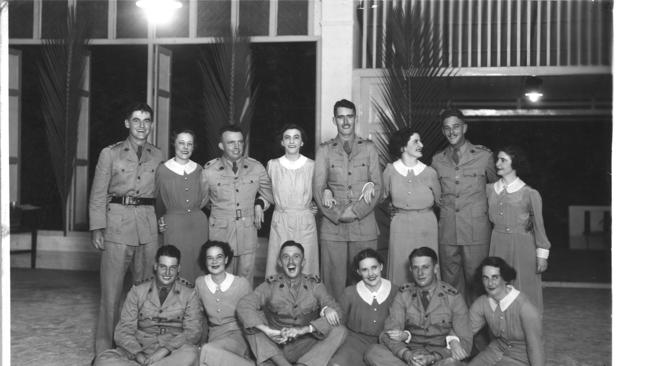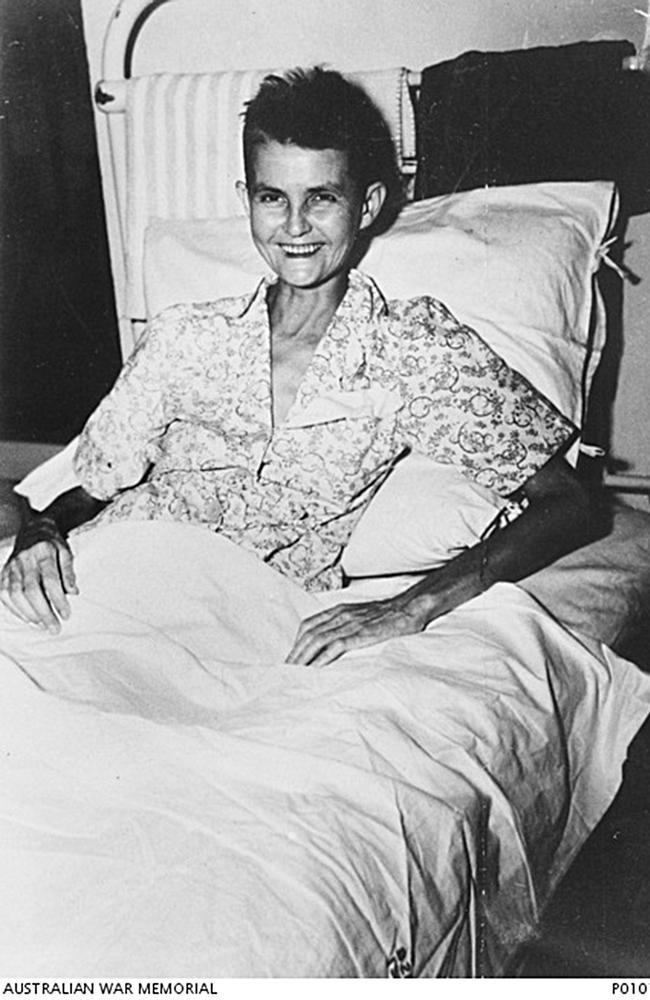Anzac Day 2021: The dark truth behind this photo
Nearly all of the nurses in this picture were either later executed, lost at sea or died as prisoners of war. This is their story.
QLD News
Don't miss out on the headlines from QLD News. Followed categories will be added to My News.
THEY were radiant young Australians, ready to do their patriotic duty and take on the challenge and adventure of war.
Yet nearly all of the nurses in this picture were either later executed, lost at sea or died as prisoners of war.
The rape, assault, detention, imprisonment and murder of Australian women in war has been acknowledged, but remains one of the darkest and most unsettling aspects of conflicts involving Australia.
When an aggressively expansionist Japanese empire occupied the Philippines in 1941 it marked the beginning of an horrific period for Australian women caught as either medical workers or civilians in South East Asia and left at the mercy of the invading Japanese Army.

The story of just one of the women above, Irene Singleton, far right in the front row, illustrates the horror that these women faced as Singapore fell to the Japanese in February of 1942.
Nurse Singleton was one of 65 Australian nurses and over 250 civilian men, women and children evacuated on the ship the Vyner Brooke from Singapore as the British stronghold fell to the invading Japanese, marking the most humiliating British surrender in history.
The ship was bombed by the Japanese and sank on February 14 1942 as it made its way towards Sumatra via Banka Strait.
Sister Singleton survived, only to be taken as a prisoner of war.
She suffered years of deprivation in an ordeal that likely included malnutrition, beatings and disease before dying in Sumatra as the war was winding up in February 1945.

Other fatalities from that one single sinking included 22 Australian nurses who survived the sinking but were marched into the sea at Bangka Island Indonesia and shot by machine gun fire.
Just one nurse, Vivian Bullwinkel, surviving by pretending to be dead before escaping into the jungle
“They just swept up and down the line and the girls fell one after the other,’’ she later said.

The Australian War Memorial records Nurse Bullwinkel retired from the Army in 1947 and became Director of Nursing at Melbourne’s Fairfield Hospital.
She was later president of the Australian College of Nursing and a member of the Council of the Australian War Memorial, living a full life before dying in 2000.
Queenslander Sister Eileen Short, born in 1904 in Maryborough, was also on that ship.
Sister Short was commissioned as an Australian Army Nurse in 1941 and originally attached to the 2/13th Australian General Hospital based in Malaya.
Sister Short spent three and half years in a prisoner of war camp in Sumatra after surviving the sinking, and returned home to resume work as a nurse in Queensland.

After she died in 1975 her coffin was draped with an Australian flag and she received a military guard of honour outside a Dalby church service.
But while her service details and photograph are recorded at the Australian War Memorial, there was no formal military recognition of her service at the funeral.
Jan Ruff-O’Herne, also caught up in the Japanese invasion, taken to a labour camp at Ambarawa Indonesia and later forced to work in a brothel.
The Dutch-born woman who later moved to Australia with her husband, and who only died last August, was made an Officer in the Order of Australia in 2002 for being an “advocate for human rights and the protection of women in war and for encouraging articulation of war-related atrocities.’’
She also appeared before a Congressional hearing in the United States on “Protecting the Human Rights of Comfort Women’’ _ referring to the women forced into sexual slavery during the Japanese occupation of South East Asia.
Christina Twomey has literally written the book on the plight of Australian women caught in Asia after the arrival of the Japanese.
A Professor of History at Monash University and, since 2017, head of the School of Philosophical, Historical and International Studies in the Faculty of Arts, Professor Twomey is internationally recognised as an authority on the social and cultural history of war, particularly in relation to the role of women.
In her 2007 Book, “Australia’s Forgotten Prisoners,’’ she examines the lives of around 1500 Australian civilians captured by the Japanese in World War 11, about one third of which were women.
Professor Twomey said the women were scattered across Asia in internment camps in countries including Malaya, and the offshore islands of Indonesia.
They were even at Singapore’s infamous Changi which was divided into an internment camp and a POW camp.
These women did not suffer in the manner of those men forced to work on the Burma railway. but nonetheless endured horrific existences which included starvation and death.
“Some internment camps were worse than others, but all were terrible,’’ she says.
“Women often had to source or grow their own food and somehow keep children fed _ it was a hard scrabble existence.’’
Yet Professor Twomey says the suffering of civilians, and even the male POWs, were given little recognition in Australia’s post World War 11 years, and even well into the 1950s and 1960s.
“War stories are by and large military stories and military stories are largely male stories,’’ Professor Twomey said.
In the late 40s and 50s Australia’s historical military narrative and Anzac tradition had a focus on battles and individual acts of courage.
“”The Army purposefully had a rule that they (the POWS) were not to be made too much of a fuss of,’’ Professor Twomey said.
“The Army did not want too much attention drawn to them because, if you made heroes of them too much, the Army was afraid people would not fight on in future wars.
“”The Army downplayed their experiences quite deliberately.’’
Professor Twomey says the wars of the 20th Century marked a rapid movement away from traditional battle on designated battle fields with unformed participants.
Now we fight wars which include massive air power with lethal immediate impacts upon civilians, while our conflicts increasingly have indirect ramifications on civilians such as starvation and disease.
In fact, in the 21st Century civilians are now likely to suffer a higher casualty count than the soldiers prosecuting the actual war.
“War has largely been the story of the military,’’ says Professor Twomey.
“But one thing we are doing now is recognising the profound impact of war on civilians.’’
Professor Twomey says the suffering of the POWs and their role in Australian military history has been embraced and acknowledged as the ANZAC narrative expanded and evolved in the 1970s and 80s.
And, in the past two decades, there has been a concerted effort by the Australian War Memorial and the ADF to broaden the story of our military history and incorporate the story of women and civilians.
Professor Twomey predicts there will be a further broadening of our understanding of war and its consequence in the decades ahead, particularly in relation to the role of women.
That will, in part, be a reflection of the increasing role women are playing in the Australian Defence Force, from privates to appointments such as that of Warrant Officer Deb Butterworth, the Navy’s most senior enlisted advisor to the Chief of Navy, Vice Admiral Mike Noonan.
As Professor Twomey says:
“If the ADF is going to retain and recruit female members it will need to acknowledge the role and work of women in war.’’


